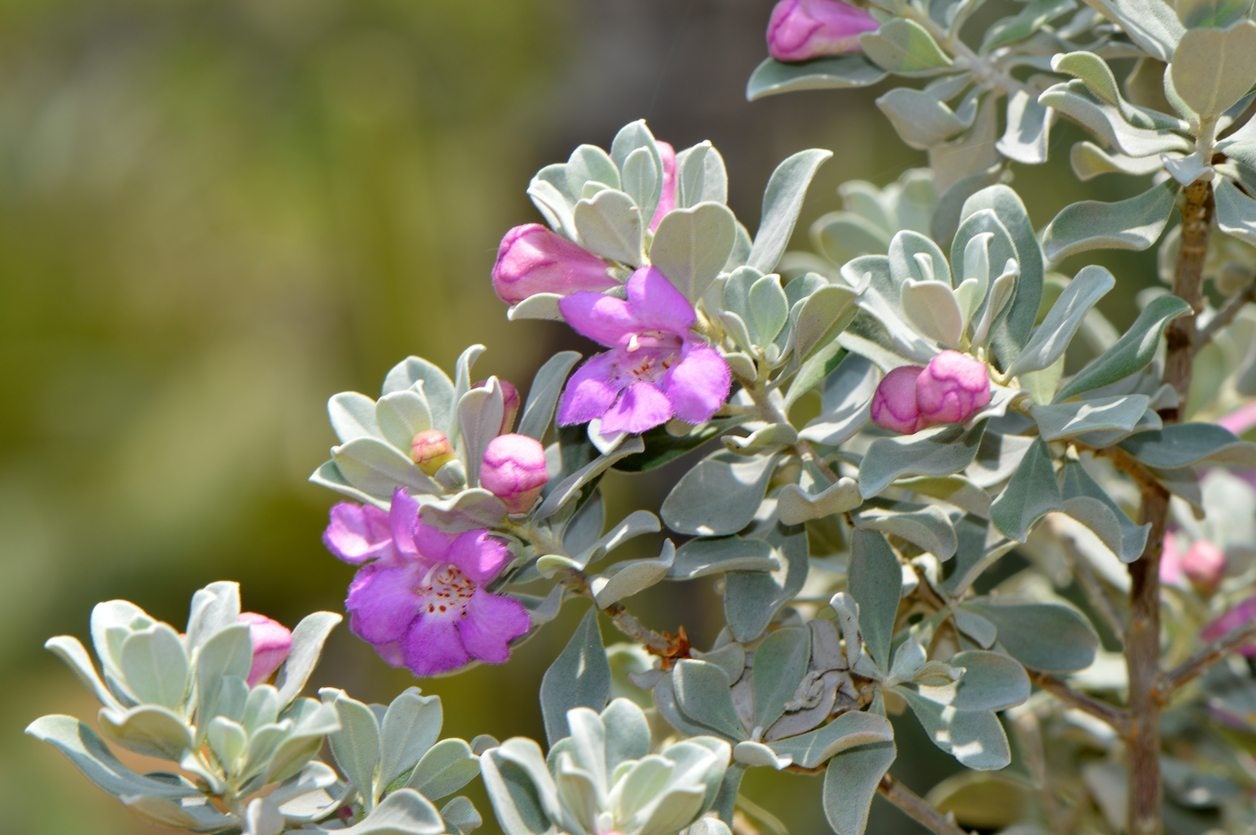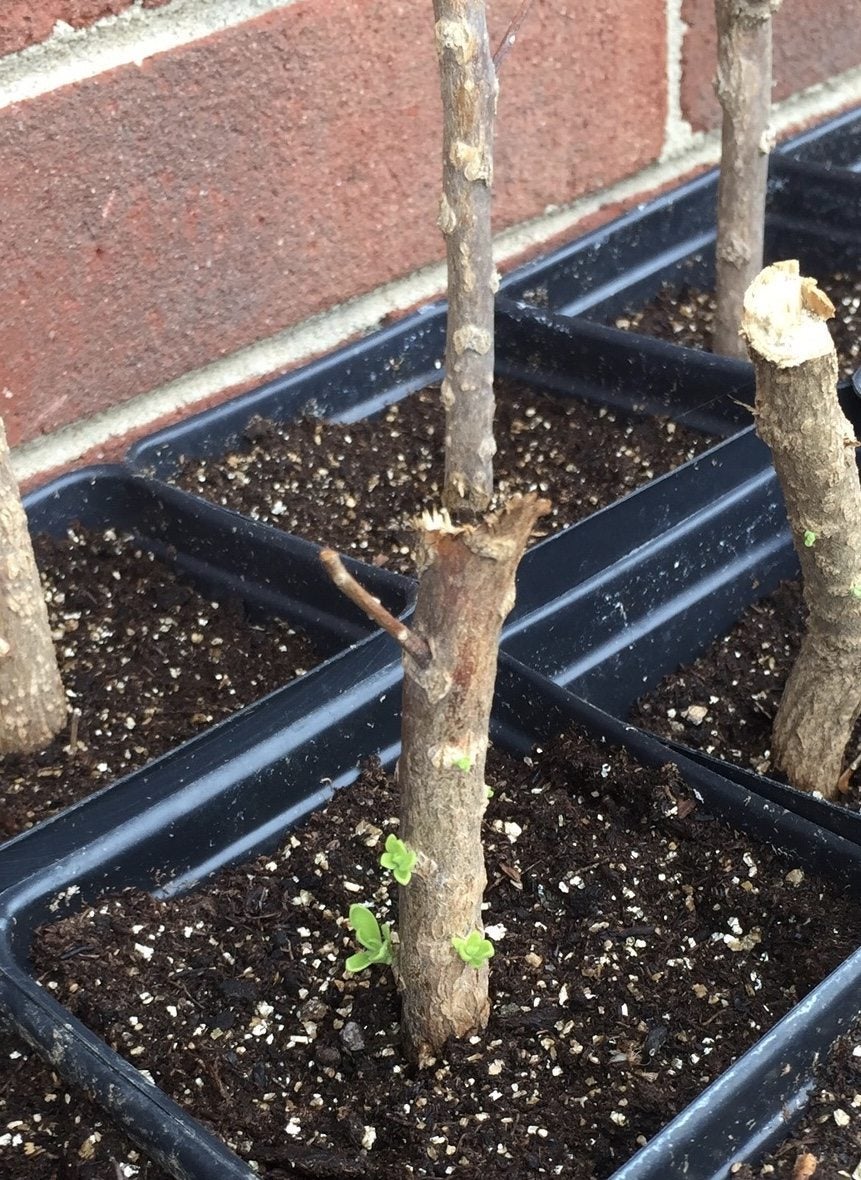Texas Sage Info: How To Grow Texas Sage Plants


Planting a native landscape in hot regions with light rainfall can be a challenge. That's where Texas purple sage can come in handy. Native to southern coastal regions of North America, the Texas sage plant is remarkably easy to grow, low maintenance, and an excellent drought-tolerant selection. The plant is wild in Texas and New Mexico, where low moisture and humidity are common conditions.
Quick Facts about Texas Sage
- Botanical name- Leucophyllum frutescens
- Height: 6-10 feet (1.8-10 m)
- Spread: 6-10 feet (1.8-10 m)
- Sun exposure: full sun
- Soil requirements: limestone, rocky, caliche, alkaline
- Hardiness zones: USDA 7-9
- When to plant: fall to early spring
Texas Sage Info
Texas sage (Leucophyllum frutescens) hails from the Chihuahuan desert, Rio Grande, Trans-Pecos, and somewhat into the Edward’s plateau. It prefers arid to semi-arid regions and is suitable for USDA zones 8 to 11. This plant bears many names, chief among them Texas sage tree, but the plant is really more of a woody shrub. The shrub flowers profusely and responds well to pruning, all combined with ease of care.
Texas sage is a classic in the American southwest. What is a Texas sage shrub? As a native plant, it provides cover for wild animals and birds and helps stabilize loose desert soils. This adaptable plant is drought tolerant and useful in areas with high heat and cold desert temperatures. It is also a landscape surprise that produces profuse lavender flowers. The plant additionally has deer resistance and thrives in poor soil.
In the figwort family, Texas sage can achieve 6 feet (1.8 m) in height with a similar spread. While the grayish green, woolly leaves are not terribly spectacular, the new wood on the plant produces copious lavender purple, magenta, or white flowers. These have three fuzzy petals and a fused set below with conspicuous white anthers.
Texas sage is easy to propagate either through seed or softwood cuttings. In most regions the leaves are evergreen, but occasionally the plant may be deciduous. Blooming starts in spring and occurs in bursts every four to six weeks up until fall in most regions.
How to Grow Texas Sage
Texas sage is a member of the coastal desert community. It has many common names and is also known as Texas ranger, Cenizo, Texas barometer bush, silver leaf, and wild lilac. It is called barometer bush because flowering is triggered by high moisture such as after rainstorms.
Sun
Texas sage must have at least 8 hours of full sun per day and can tolerate extreme heat. In shaded situations, the plant will respond with leggy growth and poor flowering.
Gardening tips, videos, info and more delivered right to your inbox!
Sign up for the Gardening Know How newsletter today and receive a free copy of our e-book "How to Grow Delicious Tomatoes".
Water
In a landscape situation, providing water to the plant will encourage flowering. Plants in un-irrigated sites will still perform well but will only produce blooms after rains. This drought tolerant shrub needs no supplemental watering during winter.
During the growing season, excess irrigation will cause growth spurts, requiring more frequent pruning. As a water-wise plant, it needs to be watered deeply but infrequently. Texas sage is used frequently as an informal hedge or foundation specimen. If planted where moisture collects. Place the plant in a berm or hill.
After being planted, young Texas sage plants should be given supplemental irrigation.
Soil
Cenizo thrives where many plants cannot. In the wild, it grows on rocky slopes and calcareous soils. It is somewhat salt tolerant and may be used in coastal landscapes. Texa sage prefers alkaline soil, but if planted in acid sites, application of dolomitic limestone will adjust the soil pH.
The plant doesn’t enjoy clay soil, but any other type will be fine. Ideal soil conditions are rocky or in crushed limestone. Plants that are installed in soil that was agriculturally prepared can get root rot in late summer. Good drainage is essential. Amend soil or select a more appropriate location for the plant if soil holds moisture excessively.
Pruning
Texas sage may be pruned to keep a specific form. In early spring, prune for shaping or rejuvenation when plants get too large. The stems may be cut 12-18 inches ( 30-46 cm.) from the ground. The plant will respond with a rapid flush of growth and blooms at the end of summer.
Overall, Texas sage does not need pruning since it has a naturally pleasing rounded form. Shearing is common but produces holes in the interior that cause the plant to decline and reduce its life. Prune once per year in late February to March if necessary.
Fertilizer
Overfertilization of Texas purple sage will lead to leggy plants and shallow roots. The plants are light feeders but will appreciate feeding in late winter to early spring. Use a slow release all purpose fertilizer or a top layer of compost around the root zone. This is sufficient to keep the plant performing beautifully. Texas sage has several unique cultivars such as ‘White Cloud’ (white flowers) and ‘Green Cloud’ which boasts green rather than silver leaves.
Problems
Cenizo is practically problem free. Texas root rot is a common issue when the shrub is in overly moist soil and temperatures are in excess of 80 F ( 27 C). Powdery mildew is possible in plants that are irrigated at night or are poorly spaced. Aphids and mealybugs are occasional pests. Some wildlife forage on the plant, but it is also a host plant for certain butterflies and a food source for birds.
Most pests steer clear of this native plant and it has few disease issues. One thing that will cause it trauma is boggy soil that doesn’t drain. Texas sage care is minimal and it is an excellent plant for a new gardener.

Bonnie Grant is a professional landscaper with a Certification in Urban Gardening. She has been gardening and writing for 15 years. A former professional chef, she has a passion for edible landscaping.
-
 Looking For Plants To Give You The Soft And Fuzzies? Try These 5 Fuzzy Leaf Plant Options
Looking For Plants To Give You The Soft And Fuzzies? Try These 5 Fuzzy Leaf Plant OptionsLovers of texture, drama, silver foliage and tactile plants will adore these special sensory garden additions. These fuzzy leaf plant options will leave you all aglow
By Susan Albert
-
 Get Ready For A Summer Of Hummers! Grow These Full Sun Hummingbird Plants and Flowers
Get Ready For A Summer Of Hummers! Grow These Full Sun Hummingbird Plants and FlowersIf you’re lucky enough to enjoy a sunny backyard, make sure you are maxing out on your pollinator opportunities and grow these full sun hummingbird plants and flowers
By Tonya Barnett
